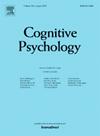Numerosity adaptation resists filtering: Insights from an illusory contour paradigm
IF 3
2区 心理学
Q1 PSYCHOLOGY
引用次数: 0
Abstract
The mechanisms underlying numerosity perception remain debated, with some theories proposing a dedicated system for segmented items and others suggesting reliance on low-level features like spatial-frequency or texture-density. Numerosity adaptation—where exposure to one array alters the perceived numerosity of a subsequent one—has been interpreted as evidence for a numerosity-specific mechanism. However, recent accounts argue that this effect may result from filtering previously processed information. To clarify the underlying mechanisms, we employed a novel adaptation paradigm using Ehrenstein-based illusory-dots as adaptors and real dots as test stimuli. This design allowed us to dissociate numerosity adaptation from low-level features or filtering, as the number of illusory-dots is negatively correlated with spatial-frequency content and, crucially, adaptors and test stimuli contain completely different items. Contrary to predictions from filtering or texture-based accounts, we found a significant increase in the PSE after adaptation, indicating a genuine numerosity-driven effect. Crucially, the point of maximal RTs uncertainty shifted in the same direction, suggesting sensory rather than decisional effects.
To corroborate these findings, in a second experiment, participants estimated the numerosity of grids containing either real or Ehrenstein-based illusory dots, presented in connected or unconnected configurations, keeping constant low-level cues between connectedness conditions. Connected items were consistently underestimated—regardless of stimulus type—confirming that Ehrenstein-based illusory dots are perceived as discrete units.
Together, these results provide strong evidence that numerosity adaptation is not driven by low-level visual features or filtering mechanisms, but by the perceived number of discrete items, supporting the existence of a numerosity-selective system.
数量适应抵制过滤:来自虚幻轮廓范式的见解
数字感知的机制仍然存在争议,一些理论提出了一个专门用于分割物品的系统,而另一些理论则认为依赖于空间频率或纹理密度等低级特征。数量适应——暴露在一个数组中会改变对后续数组的感知数量——已经被解释为数量特定机制的证据。然而,最近的研究认为,这种影响可能是由于过滤了先前处理过的信息。为了明确潜在的机制,我们采用了一种新的适应范式,将基于ehrenstein的虚幻点作为适应因子,真实点作为测试刺激。这种设计使我们能够将数值适应与低水平特征或过滤分离开来,因为幻觉点的数量与空间频率内容负相关,而且至关重要的是,适配器和测试刺激包含完全不同的项目。与过滤或基于纹理的帐户的预测相反,我们发现适应后PSE显着增加,表明真正的数字驱动效应。至关重要的是,RTs的最大不确定性点向同一方向移动,表明感觉效应而非决策效应。为了证实这些发现,在第二个实验中,参与者估计了包含真实点或基于ehrenstein的虚幻点的网格的数量,这些网格以连接或不连接的形式呈现,在连接条件之间保持恒定的低水平线索。无论刺激类型如何,相互关联的项目总是被低估,这证实了基于ehrenstein的幻觉点被视为离散的单位。总之,这些结果提供了强有力的证据,证明数字适应不是由低级视觉特征或过滤机制驱动的,而是由感知到的离散项目的数量驱动的,支持数字选择系统的存在。
本文章由计算机程序翻译,如有差异,请以英文原文为准。
求助全文
约1分钟内获得全文
求助全文
来源期刊

Cognitive Psychology
医学-心理学
CiteScore
5.40
自引率
3.80%
发文量
29
审稿时长
50 days
期刊介绍:
Cognitive Psychology is concerned with advances in the study of attention, memory, language processing, perception, problem solving, and thinking. Cognitive Psychology specializes in extensive articles that have a major impact on cognitive theory and provide new theoretical advances.
Research Areas include:
• Artificial intelligence
• Developmental psychology
• Linguistics
• Neurophysiology
• Social psychology.
 求助内容:
求助内容: 应助结果提醒方式:
应助结果提醒方式:


